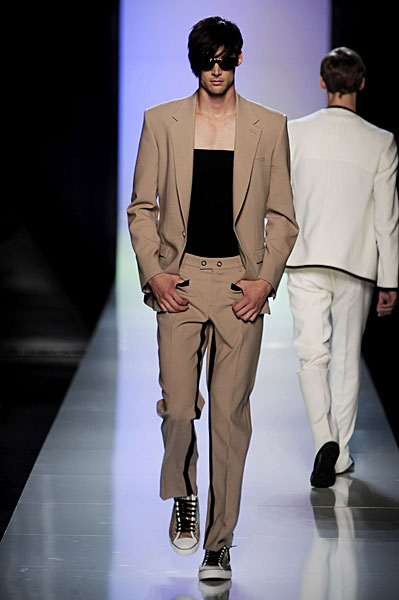
Known for rebelling against the hand of conformity, it is not a surprise that the Jean Paul Gaultier spring 2010 collection breaks with traditional gender roles. Solid skirts and bustiers season an eclectic mix of reverse coloring, horizontal gradients and both prison and nautical stripes. The bustier acts as the collection’s central piece–appearing underneath a great deal of blazers as well as on its own. Contrasting trim adds depth to a collection geared towards a younger adventurous consumer. Bold and weightless, the collection’s sheer jackets are no surprise. If the aforementioned elements are not enough to warrant variety, Gaultier throws denim into the mix, not only cutting out swatches of fabric, but incorporating a tangled arrangement of bondage straps. As a final note, the collection’s persistent use of translucent Converse solidify its intended reach for a younger audience who is willing to put their trust in Gaultier, lay back and enjoy the ride.
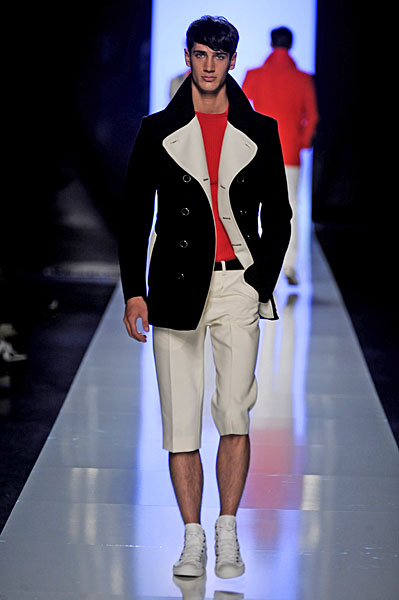
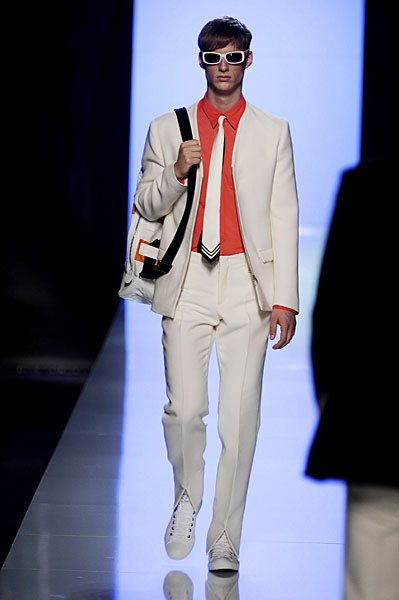

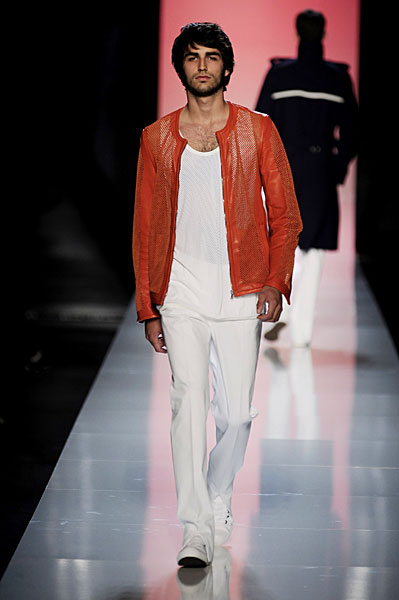
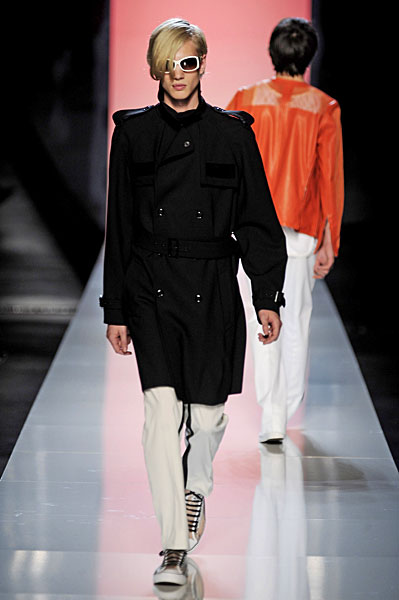

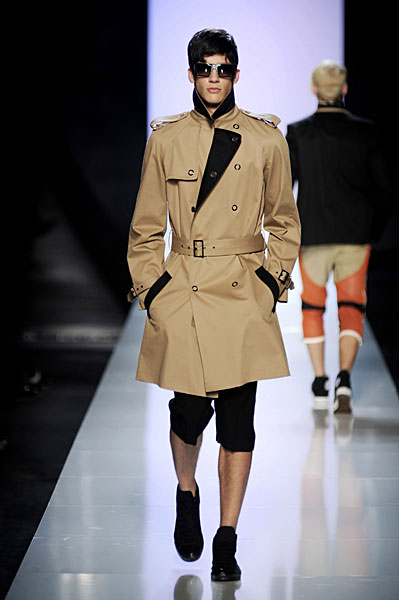

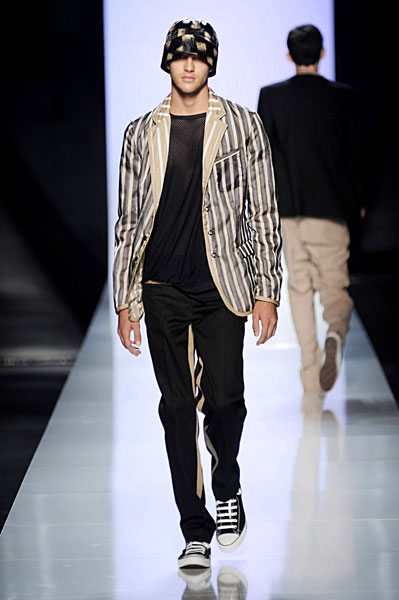

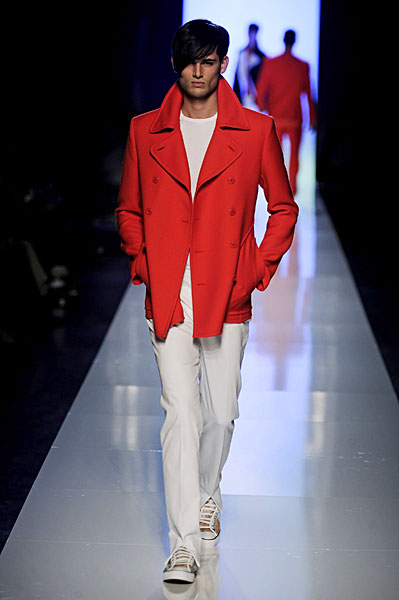
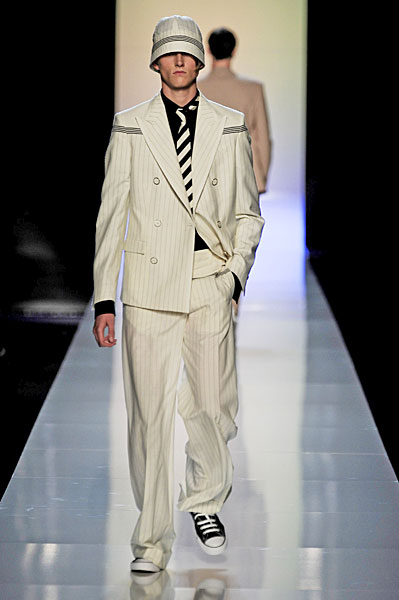
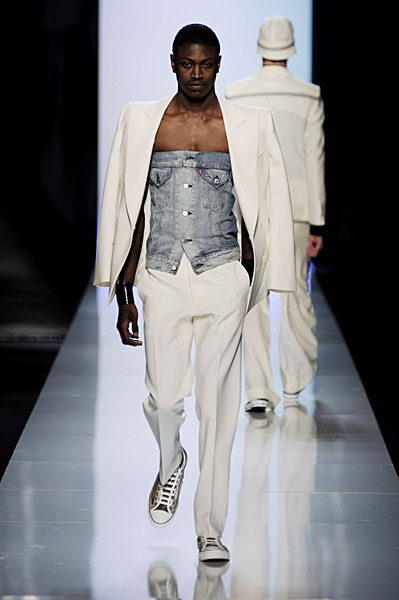
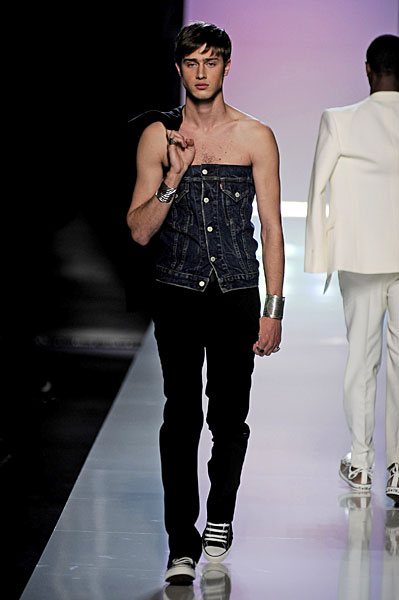
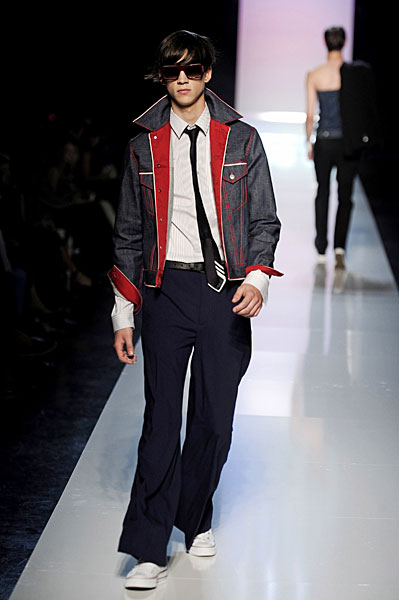
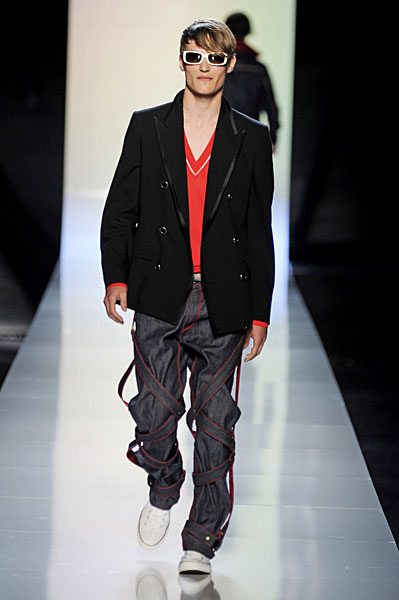
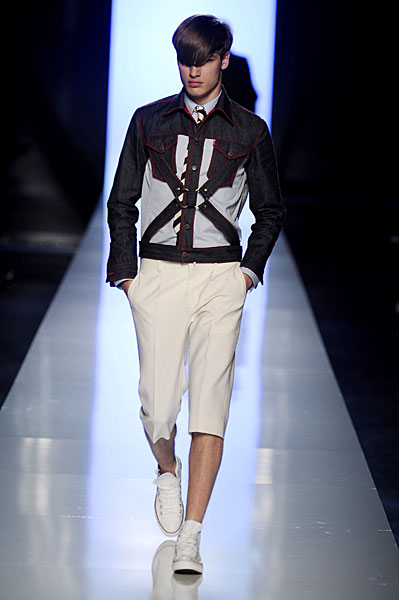
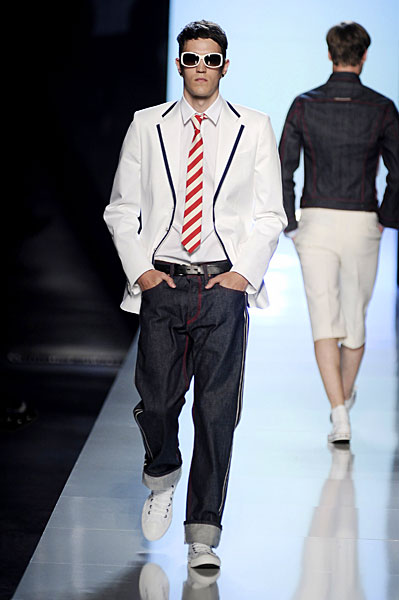
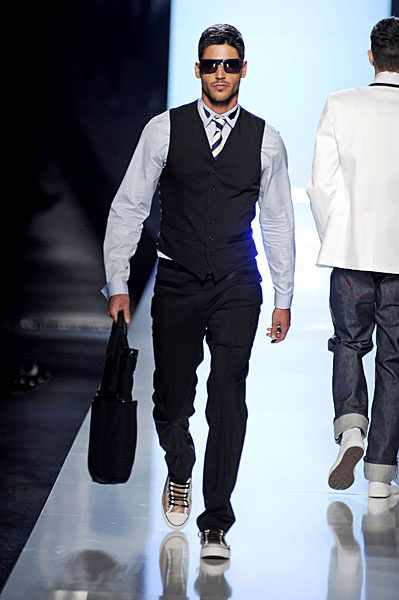
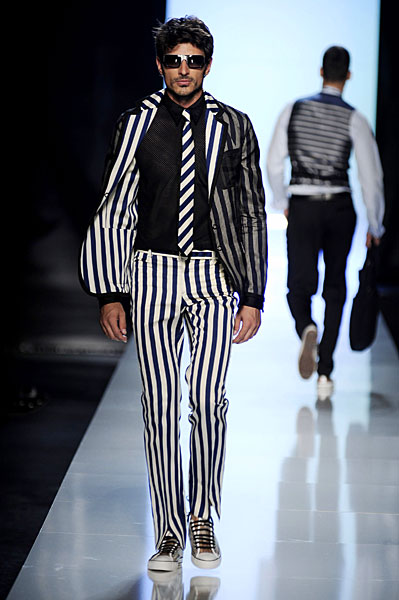
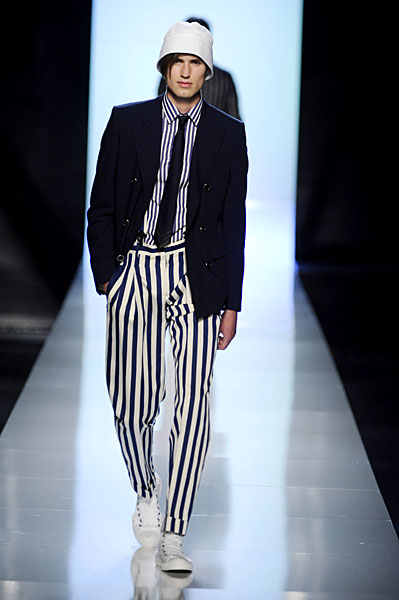
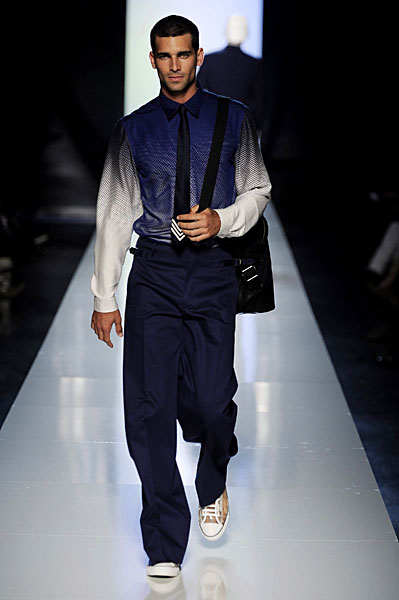
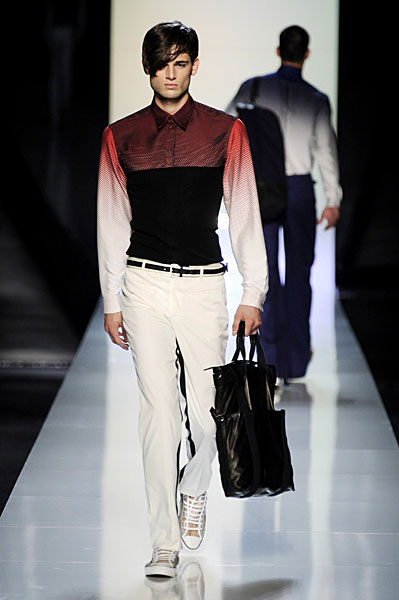
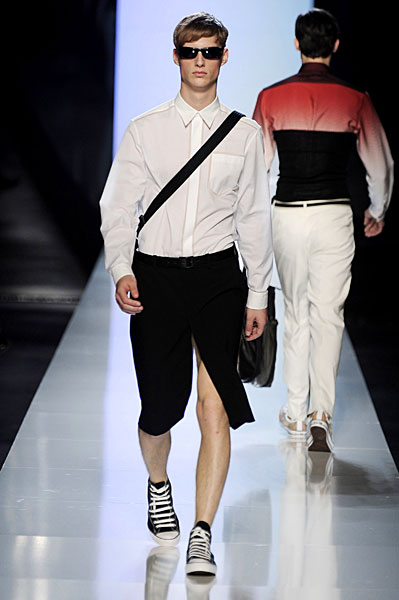
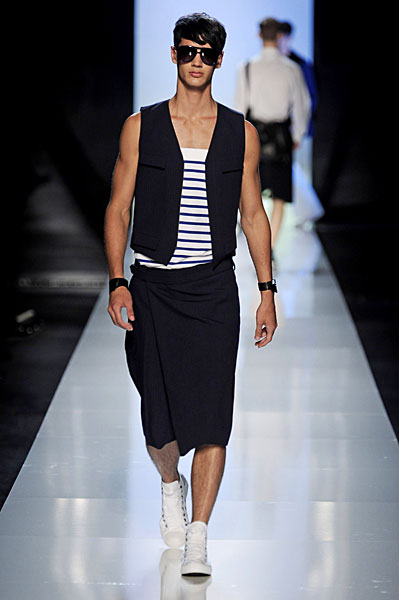
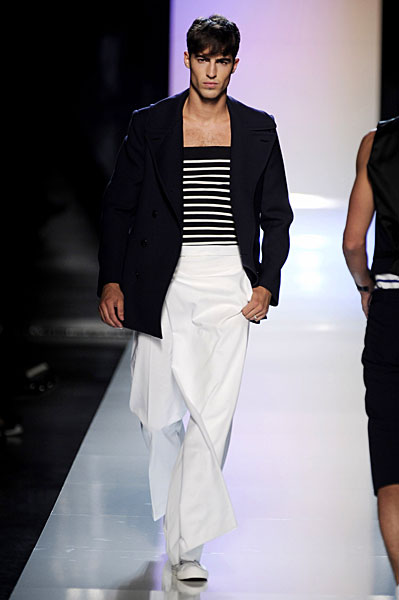
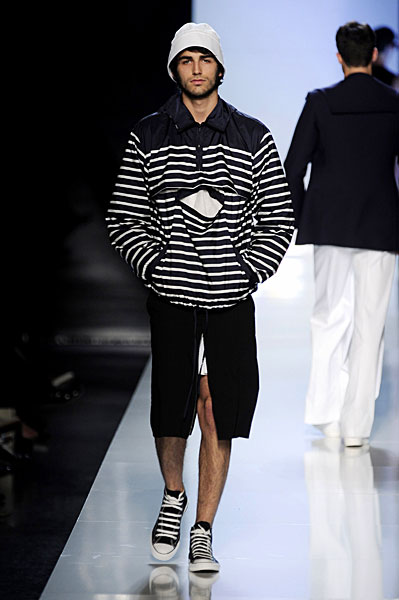
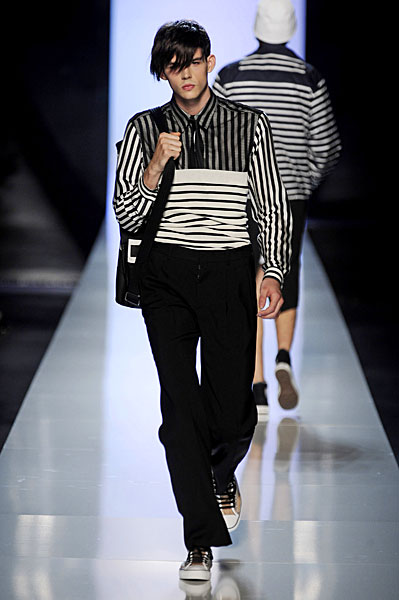
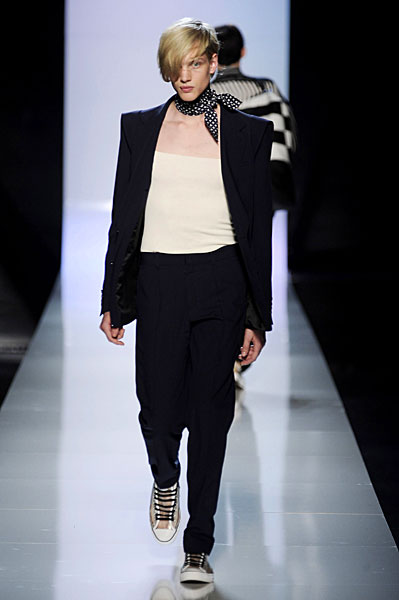
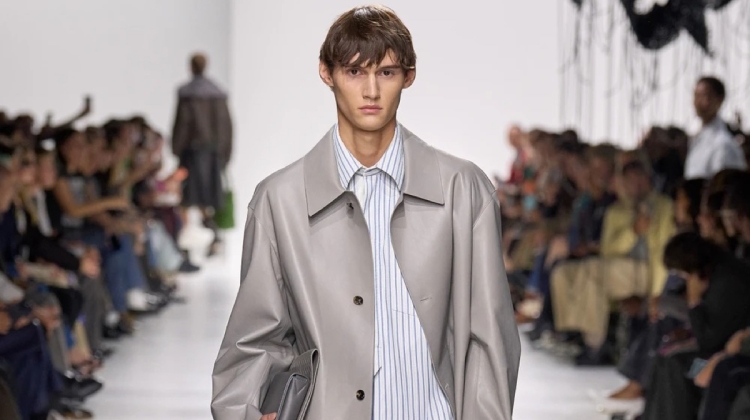
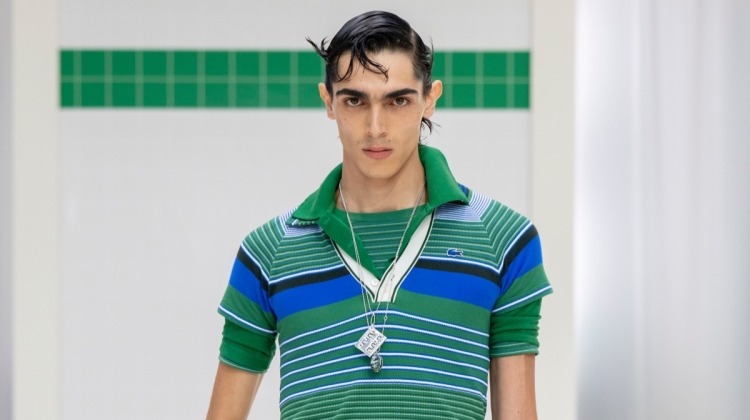

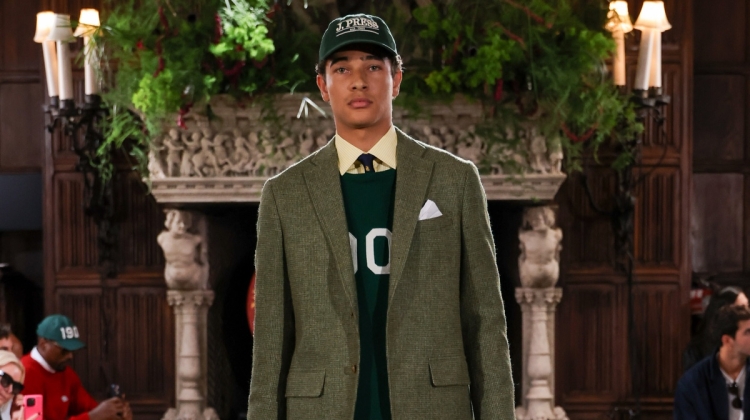
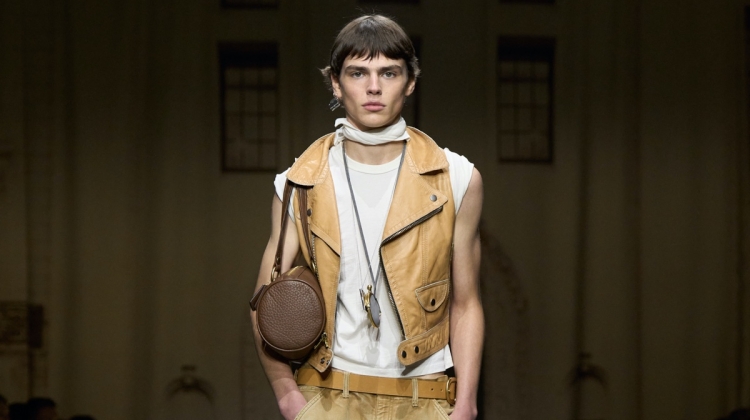

the best desinger of times..
I feel like the very last look should have been the starting point. The rest, I felt like I had seen it before, and could see a trendy person wearing it right now in Paris or London. The last look shows us, I think, true (or at least closer-to) androgyny–the other uses of the bustiers were ridiculous, more drag than (good) design, not to mention they were paired with pretty much ordinary pants/jackets and (ugh) over-used Converses, so that the bustier says, “Hey, I’m not to be taken seriously, I’m just another “shocking” thing to be shown on catwalks so people say ‘Oh he’s innovative’ but then never really be sold, or sold alongside better-selling clothes”. Not only is the last look androgynous, its proportions are also different, it shows good design, and it’s simple (remember Occam’s razor?). Of course part of it is the (rather feminine-looking) model, but it was refreshing to see after a whole collection of various inter-collection trends (prison stripes) and annoying add-ons that won’t make it to stores. Why can’t designers be honest? Either show sure-sell, trendy, and contemporary pieces, the ones that make it to stores anyway for such big designers, or show innovative pieces that show good, forward-thinking design and are unfamiliar to all who see and buy them.
I feel like the very last look should have been the starting point. The rest, I felt like I had seen it before, and could see a trendy person wearing it right now in Paris or London. The last look shows us, I think, true (or at least closer-to) androgyny–the other uses of the bustiers were ridiculous, more drag than (good) design, not to mention they were paired with pretty much ordinary pants/jackets and (ugh) over-used Converses, so that the bustier says, “Hey, I’m not to be taken seriously, I’m just another “shocking” thing to be shown on catwalks so people say ‘Oh he’s innovative’ but then never really be sold, or sold alongside better-selling clothes”. Not only is the last look androgynous, its proportions are also different, it shows good design, and it’s simple (remember Occam’s razor?). Of course part of it is the (rather feminine-looking) model, but it was refreshing to see after a whole collection of various inter-collection trends (prison stripes) and annoying add-ons that won’t make it to stores. Why can’t designers be honest? Either show sure-sell, trendy, and contemporary pieces, the ones that make it to stores anyway for such big designers, or show innovative pieces that show good, forward-thinking design and are unfamiliar to all who see and buy them.
I feel like the very last look should have been the starting point. The rest, I felt like I had seen it before, and could see a trendy person wearing it right now in Paris or London. The last look shows us, I think, true (or at least closer-to) androgyny–the other uses of the bustiers were ridiculous, more drag than (good) design, not to mention they were paired with pretty much ordinary pants/jackets and (ugh) over-used Converses, so that the bustier says, “Hey, I’m not to be taken seriously, I’m just another “shocking” thing to be shown on catwalks so people say ‘Oh he’s innovative’ but then never really be sold, or sold alongside better-selling clothes”. Not only is the last look androgynous, its proportions are also different, it shows good design, and it’s simple (remember Occam’s razor?). Of course part of it is the (rather feminine-looking) model, but it was refreshing to see after a whole collection of various inter-collection trends (prison stripes) and annoying add-ons that won’t make it to stores. Why can’t designers be honest? Either show sure-sell, trendy, and contemporary pieces, the ones that make it to stores anyway for such big designers, or show innovative pieces that show good, forward-thinking design and are unfamiliar to all who see and buy them.
the best desinger of times..
the best desinger of times..